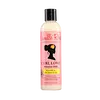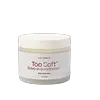What's inside
What's inside
 Key Ingredients
Key Ingredients

No key ingredients
 Benefits
Benefits

 Concerns
Concerns

 Ingredients Side-by-side
Ingredients Side-by-side

Water
Skin ConditioningBehentrimonium Methosulfate
Cetearyl Alcohol
EmollientPersea Gratissima Oil
Skin ConditioningOryza Sativa Bran Oil
EmollientAloe Barbadensis Leaf Juice
Skin ConditioningRicinus Communis Seed Oil
MaskingMacadamia Ternifolia Seed Oil
EmollientSorbitol
HumectantCamellia Sinensis Leaf Extract
AntimicrobialOryza Sativa
Milk
Skin ConditioningRosa Canina Fruit Oil
EmollientCeteareth-20
CleansingUlmus Fulva Bark Extract
MoisturisingPhenoxyethanol
PreservativeCaprylyl Glycol
EmollientDiethyl Phthalate
MaskingWater, Behentrimonium Methosulfate, Cetearyl Alcohol, Persea Gratissima Oil, Oryza Sativa Bran Oil, Aloe Barbadensis Leaf Juice, Ricinus Communis Seed Oil, Macadamia Ternifolia Seed Oil, Sorbitol, Camellia Sinensis Leaf Extract, Oryza Sativa, Milk, Rosa Canina Fruit Oil, Ceteareth-20, Ulmus Fulva Bark Extract, Phenoxyethanol, Caprylyl Glycol, Diethyl Phthalate
 Reviews
Reviews

Ingredients Explained
These ingredients are found in both products.
Ingredients higher up in an ingredient list are typically present in a larger amount.
Behentrimonium Methosulfate is an ammonium salt. It is mainly used to prevent static in haircare products as a surfactant.
Surfactants have differing ends: one side is hydrophilic while the other end is hydrophobic.
Surfactants also help your cleansers remove pollutants more easily from the skin.
Learn more about Behentrimonium MethosulfateCaprylyl Glycol is a humectant and emollient, meaning it attracts and preserves moisture.
It is a common ingredient in many products, especially those designed to hydrate skin. The primary benefits are retaining moisture, skin softening, and promoting a healthy skin barrier.
Though Caprylyl Glycol is an alcohol derived from fatty acids, it is not the kind that can dry out skin.
This ingredient is also used as a preservative to extend the life of products. It has slight antimicrobial properties.
Learn more about Caprylyl GlycolCetearyl alcohol is a mixture of two fatty alcohols: cetyl alcohol and stearyl alcohol. It is mainly used as an emulsifier. Emulsifiers help prevent the separation of oils and products. Due to its composition, it can also be used to thicken a product or help create foam.
Cetearyl alcohol is an emollient. Emollients help soothe and hydrate the skin by trapping moisture.
Studies show Cetearyl alcohol is non-toxic and non-irritating. The FDA allows products labeled "alcohol-free" to have fatty alcohols.
This ingredient is usually derived from plant oils such as palm, vegetable, or coconut oils. There is debate on whether this ingredient will cause acne.
Due to the fatty acid base, this ingredient may not be Malassezia folliculitis safe.
Learn more about Cetearyl AlcoholPhenoxyethanol is a preservative that has germicide, antimicrobial, and aromatic properties. Studies show that phenoxyethanol can prevent microbial growth. By itself, it has a scent that is similar to that of a rose.
It's often used in formulations along with Caprylyl Glycol to preserve the shelf life of products.
Water. It's the most common cosmetic ingredient of all. You'll usually see it at the top of ingredient lists, meaning that it makes up the largest part of the product.
So why is it so popular? Water most often acts as a solvent - this means that it helps dissolve other ingredients into the formulation.
You'll also recognize water as that liquid we all need to stay alive. If you see this, drink a glass of water. Stay hydrated!
Learn more about Water